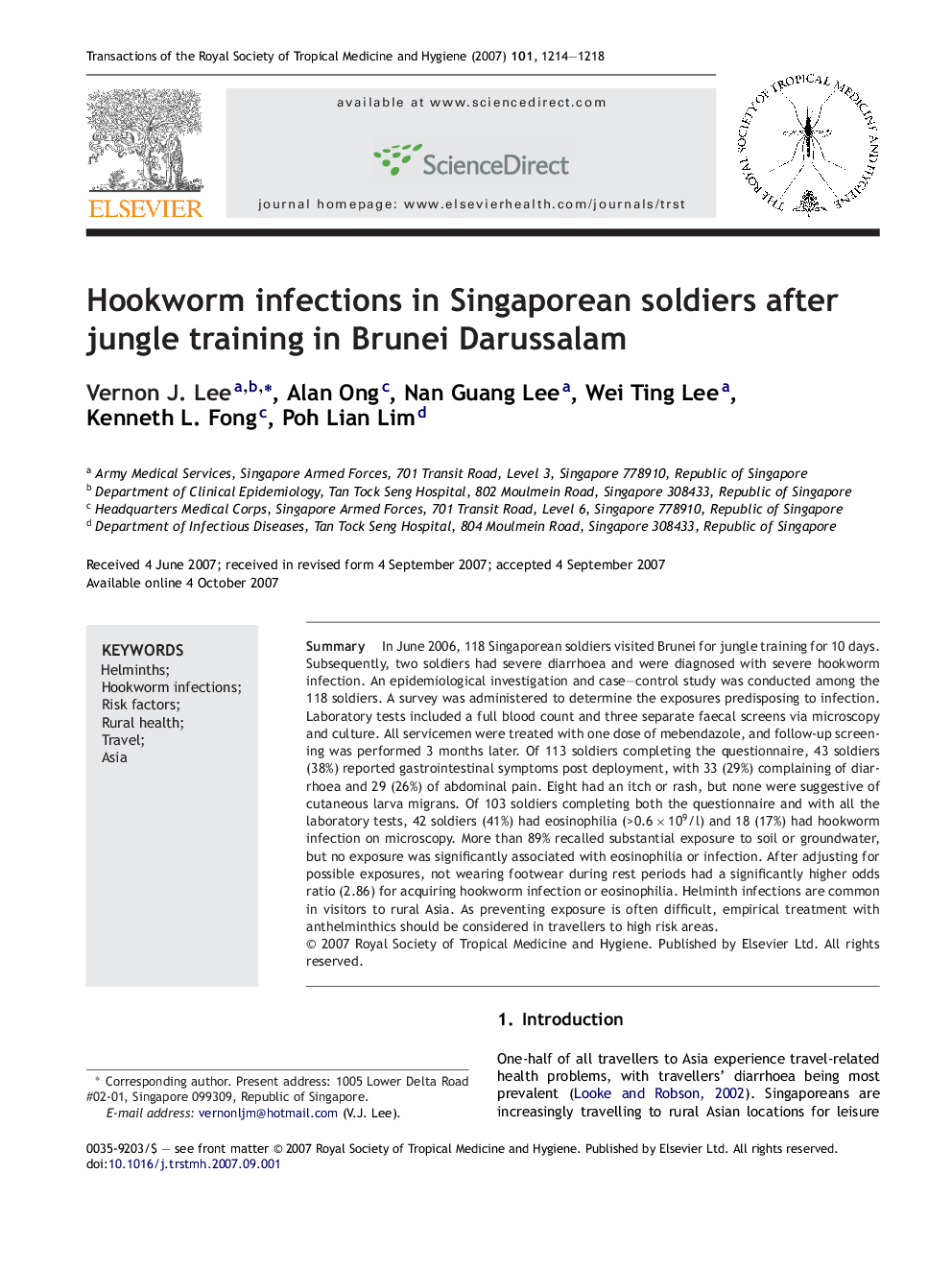| Article ID | Journal | Published Year | Pages | File Type |
|---|---|---|---|---|
| 6137524 | Transactions of the Royal Society of Tropical Medicine and Hygiene | 2007 | 5 Pages |
Abstract
In June 2006, 118 Singaporean soldiers visited Brunei for jungle training for 10 days. Subsequently, two soldiers had severe diarrhoea and were diagnosed with severe hookworm infection. An epidemiological investigation and case-control study was conducted among the 118 soldiers. A survey was administered to determine the exposures predisposing to infection. Laboratory tests included a full blood count and three separate faecal screens via microscopy and culture. All servicemen were treated with one dose of mebendazole, and follow-up screening was performed 3 months later. Of 113 soldiers completing the questionnaire, 43 soldiers (38%) reported gastrointestinal symptoms post deployment, with 33 (29%) complaining of diarrhoea and 29 (26%) of abdominal pain. Eight had an itch or rash, but none were suggestive of cutaneous larva migrans. Of 103 soldiers completing both the questionnaire and with all the laboratory tests, 42 soldiers (41%) had eosinophilia (>0.6Â ÃÂ 109/l) and 18 (17%) had hookworm infection on microscopy. More than 89% recalled substantial exposure to soil or groundwater, but no exposure was significantly associated with eosinophilia or infection. After adjusting for possible exposures, not wearing footwear during rest periods had a significantly higher odds ratio (2.86) for acquiring hookworm infection or eosinophilia. Helminth infections are common in visitors to rural Asia. As preventing exposure is often difficult, empirical treatment with anthelminthics should be considered in travellers to high risk areas.
Related Topics
Life Sciences
Immunology and Microbiology
Applied Microbiology and Biotechnology
Authors
Vernon J. Lee, Alan Ong, Nan Guang Lee, Wei Ting Lee, Kenneth L. Fong, Poh Lian Lim,
